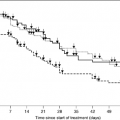Outcomes Assessment in Palliative Care
Joan M. Teno
Accountability has been called the third revolution in medical care 1. Health care providers are now often faced with new questions. For example, what are the outcomes of palliative care that justify its continued institutional support? Or, what is the evidence for the use of a certain medical intervention for a specific patient? Fundamental to answering these questions are defining quality of care for seriously ill patients and determining how care is measured.
Quality care at the end of life is different than during any other period of time. Dying persons, their families, and health care providers are often faced with decisions that involve trade-offs between length of life and quality of life. Reasonable persons may differ in such decisions. Therefore, preferences and values are important to shaping treatment decisions in ways unlike other time periods. Outcomes assessment for the dying must take this into consideration. In this chapter, a practical approach to examining outcomes, whether it is part of an audit prior to quality improvement efforts or for the ongoing assessment of institutional quality of care, will be discussed.
Why Examine Outcomes?
The first response of staff to auditing the quality of care is, “Why?” A typical response is that their work cannot be measured. Yet, audits and ongoing quality monitoring through examining administrative data, reviewing medical records, and/or speaking with dying persons and families, leads to important opportunities to improve quality of care. Simply stated, “If you don’t measure it, you won’t improve it” 2.
The results of assessing the outcomes of palliative medicine can help create the needed attention to the issue of improving the quality of care. Such tension can create the awareness among health care providers of opportunities to improve and enhance their current practices. Examining the outcomes can be critical to detecting early problems with new medications or other unintended consequences from medical interventions. Examining outcomes can guide organizational efforts to improve the quality of care. For example, knowing that one in four persons now die in a nursing home provides important information for the planning of new programs to meet the needs of the dying 3.
What Outcomes to Measure?
Reflecting on the thirtieth anniversary of St. Christopher’s Hospice, Dame Cicely Saunders said, “We have never lost sight of the values that were so important to David: commitment to openness, openness to challenge, and the absolute priority of patients’ own views on what they need” 4. Fundamental to palliative care is meeting the needs and expectations of patients and families. Quality in a 42-year-old with an acute myocardial infarction can be measured by whether interventions have been done that minimize infarct size such as the use of aspirin or percutaneous transluminal angioplasty. The vast majority of persons would want efforts to focus on restoring function under these circumstances. On the other hand, the circumstances of a 42-year-old dying of stage IV lung cancer are quite different. Technological interventions require weighting of their impact on both quality and quantity of life—decisions that require the input of an informed patient.
The importance of preferences is reflected in the Institute of Medicine (IOM) definition of quality of care: the “degree to which health services for individuals and populations increased the likelihood of desired health outcomes and are consistent with professional knowledge” 5. This definition implies that conceptual models for quality care (as well as instruments measuring quality) must be based on both professional knowledge and informed patient preferences. To date, most conceptual models have been built either around expert opinion or qualitative data from patients, families, or health care providers.
Fortunately, both experts and consumers agree in many ways about what is important for end-of-life care—physical comfort, emotional support, and autonomy. However, they have significant areas of disagreement as well, for example, unmet needs (Table 77.1). Family members want more information on what to expect and how they can help their dying loved ones. Patients and families emphasize the importance of closure at the end of life, including issues of personal relationships. Families often speak of frustration with a lack of coordination of medical care. It often is not clear who is in charge; different health care providers provide conflicting information, and transitions can be fraught with confusion 6.
One conceptual model, Patient Focused, Family-Centered Medical Care (Table 77.1) is based on a review of existing professional guidelines and results from focus groups conducted with family members 6. According to this model, institutions, and care providers striving to achieve patient-focused, family-centered medical care for the seriously ill patient should:
Provide the desired level of physical comfort and emotional support
Promote shared decision making, including care planning in advance
Focus on the individual patient by facilitating situations in which patients achieve their desired levels of control, staff members treat patients with respect and dignity, and patients are aided in achieving their desired levels of closure and
Attend to the needs of caregivers for information and skills in providing care for the patient, and provide emotional support to the family before and after the patient’s death
Table 77.1 Comparison of Domains of Expert, Patients, Family Members, Health Care Providers, and Proposed Combined Model in Measuring Quality of Care at End of Life | |||||||||||||||||||||||||||||||||||||||||||||||||||||||||||||||
|---|---|---|---|---|---|---|---|---|---|---|---|---|---|---|---|---|---|---|---|---|---|---|---|---|---|---|---|---|---|---|---|---|---|---|---|---|---|---|---|---|---|---|---|---|---|---|---|---|---|---|---|---|---|---|---|---|---|---|---|---|---|---|---|
| |||||||||||||||||||||||||||||||||||||||||||||||||||||||||||||||
On the basis of this model, a survey intended to be used as part of an initial quality audit of the quality of end-of-life care has been developed and validated. This survey, Brown University Family Evaluation of Hospice Care, has been adopted by National Hospice and Palliative Care Organization with a recent study of “early adopter hospices” showing variation suggesting discriminant validity 11.
When are Outcomes Measured?
The question of when outcomes are measured is an extremely important consideration. Dying is unlike any other period of time. Often, the dying person and her health care providers are balancing the hope for longevity versus the need to make appropriate preparation. Although many outcome measures are not clearly linked to disease trajectory and patient readiness, several outcomes are linked to either. For example, issues around closure are clearly linked to the dying person and family readiness to discuss that the patient is dying. Therefore, the wording of questions and timing of administration of survey must be done in a sensitive manner to reflect where the dying person is in their readiness to discuss existential issues. Other process measures, such as counseling on advance directives or discussion of hospice, should reflect the recommendation of professional guidelines with measures of quality of care to include counterbalancing measures about whether such discussions were done in a sensitive and compassionate manner.
How are Outcomes Measured?
Assessment of outcomes refers to measuring the “end results”—the impact or effect of medical care on the dying person and/or the family. Measuring outcomes allows you to judge the effectiveness of medical interventions, innovative programs, and new medications. In addition to examining outcomes, process measures provide important information for quality improvement and examination of the effect of new programs. A process measure examines what a service or intervention does for patients and their families. For example, a process measure focuses on whether there is a regular assessment of pain noted in the medical record, while an outcome measure examines whether patients report that they received their desired amount of pain relief. Both are important and critical to measure. Ultimately, the quality of medical care is judged by changes in outcome indicators. Yet, an organization will not achieve those outcomes if it does not implement key processes of care that are known to benefit medical care.
Key to choosing an outcome or process measure is the intended use of the quality measures. Table 77.2 notes the four potential uses of measurement tools.
Stay updated, free articles. Join our Telegram channel

Full access? Get Clinical Tree







